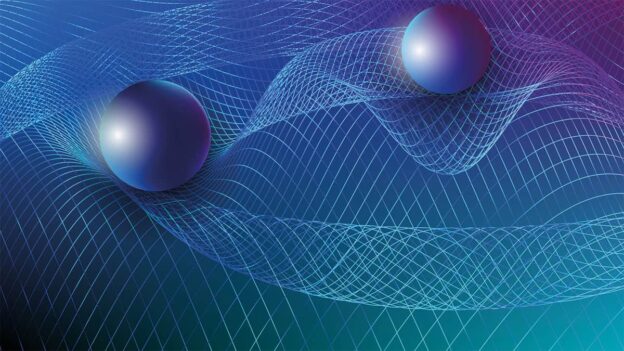In computing, quantum mechanics is a double-edged sword. While computers that use quantum bits, or qubits, can perform certain operations much faster than their classical counterparts, these qubits only maintain their quantum nature – their superpositions and entanglement – for a limited time. Beyond this so-called coherence time, interactions with the environment, or noise, lead to loss of information and errors. Worse, because quantum states cannot be copied – a consequence of quantum mechanics known as the no-cloning theorem – or directly observed without collapsing the state, correcting these errors requires more sophisticated strategies than the simple duplications used in classical computing.
One such strategy is known as an approximate quantum error correction (AQEC) code. Unlike exact QEC codes, which aim for perfect error correction, AQEC codes help quantum computers return to almost, though not exactly, their intended state. “When we can allow mild degrees of approximation, the code can be much more efficient,” explains Zi-Wen Liu, a theoretical physicist who studies quantum information and computation at China’s Tsinghua University. “This is a very worthwhile trade-off.”
The problem is that the performance and characteristics of AQEC codes are poorly understood. For instance, AQEC conventionally entails the expectation that errors will become negligible as system size increases. This can in fact be achieved simply by appending a series of redundant qubits to the logical state for random local noise; the likelihood of the logical information being affected would, in that case, be vanishingly small. However, this approach is ultimately unhelpful. This raises the questions: What separates good (that is, non-trivial) codes from bad ones? Is this dividing line universal?
Establishing a new boundary
So far, scientists have not found a general way of differentiating trivial and non-trivial AQEC codes. However, this blurry boundary motivated Liu, Daniel Gottesman of the University of Maryland, US; Jinmin Yi of Canada’s Perimeter Institute for Theoretical Physics; and Weicheng Ye at the University of British Columbia, Canada, to develop a framework for doing so.
To this end, the team established a crucial parameter called subsystem variance. This parameter describes the fluctuation of subsystems of states within the code space, and, as the team discovered, links the effectiveness of AQEC codes to a property known as quantum circuit complexity.
Circuit complexity, an important concept in both computer science and physics, represents the optimal cost of a computational process. This cost can be assessed in many ways, with the most intuitive metrics being the minimum time or the “size” of computation required to prepare a quantum state using local gate operations. For instance, how long does it take to link up the individual qubits to create the desired quantum states or transformations needed to complete a computational task?
The researchers found that if the subsystem variance falls below a certain threshold, any code within this regime is considered a nontrivial AQEC code and subject to a lower bound of circuit complexity. This finding is highly general and does not depend on the specific structures of the system. Hence, by establishing this boundary, the researchers gained a more unified framework for evaluating and using AQEC codes, allowing them to explore broader error correction schemes essential for building reliable quantum computers.
A quantum leap
But that wasn’t all. The researchers also discovered that their new AQEC theory carries implications beyond quantum computing. Notably, they found that the dividing line between trivial and non-trivial AQEC codes also arises as a universal “threshold” in other physical scenarios – suggesting that this boundary is not arbitrary but rooted in elementary laws of nature.
One such scenario is the study of topological order in condensed matter physics. Topologically ordered systems are described by entanglement conditions and their associated code properties. These conditions include long-range entanglement, which is a circuit complexity condition, and topological entanglement entropy, which quantifies the extent of long-range entanglement. The new framework clarifies the connection between these entanglement conditions and topological quantum order, allowing researchers to better understand these exotic phases of matter.
A more surprising connection, though, concerns one of the deepest questions in modern physics: how do we reconcile quantum mechanics with Einstein’s general theory of relativity? While quantum mechanics governs the behavior of particles at the smallest scales, general relativity accounts for gravity and space-time on a cosmic scale. These two pillars of modern physics have some incompatible intersections, creating challenges when applying quantum mechanics to strongly gravitational systems.
In the 1990s, a mathematical framework called the anti-de Sitter/conformal field theory correspondence (AdS/CFT) emerged as a way of using CFT to study quantum gravity even though it does not incorporate gravity. As it turns out, the way quantum information is encoded in CFT has conceptual ties to QEC. Indeed, these ties have driven recent advances in our understanding of quantum gravity.

Why error correction is quantum computing’s defining challenge
By studying CFT systems at low energies and identifying connections between code properties and intrinsic CFT features, the researchers discovered that the CFT codes that pass their AQEC threshold might be useful for probing certain symmetries in quantum gravity. New insights from AQEC codes could even lead to new approaches to spacetime and gravity, helping to bridge the divide between quantum mechanics and general relativity.
Some big questions remain unanswered, though. One of these concerns the line between trivial and non-trivial codes. For instance, what happens to codes that live close to the boundary? The researchers plan to investigate scenarios where AQEC codes could outperform exact codes, and to explore ways to make the implications for quantum gravity more rigorous. They hope their study will inspire further explorations of AQEC’s applications to other interesting physical systems.
Quantum error correction research yields unexpected quantum gravity insights





